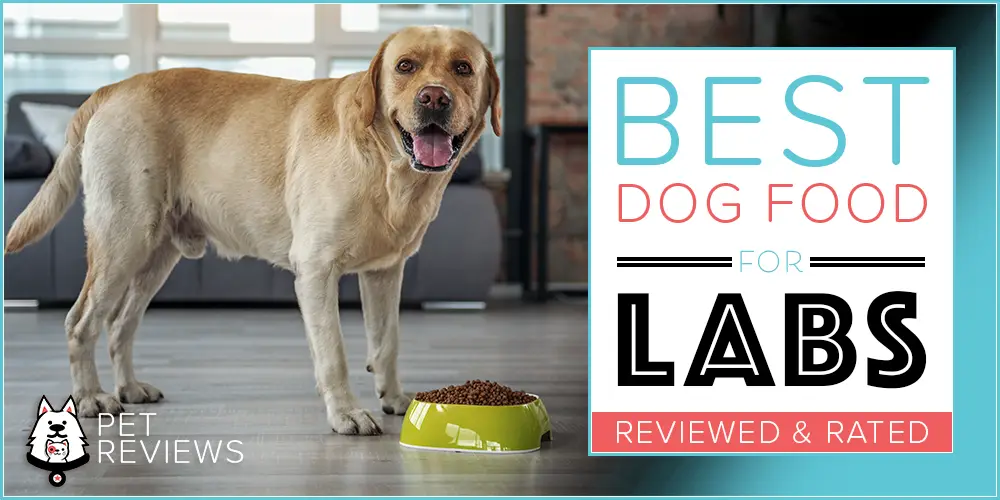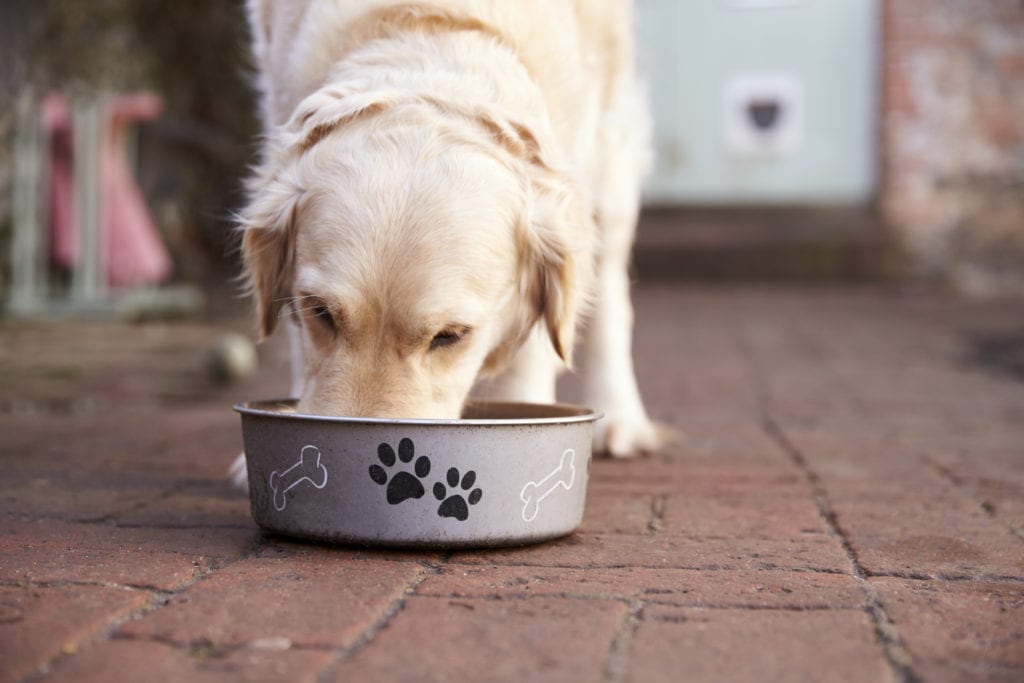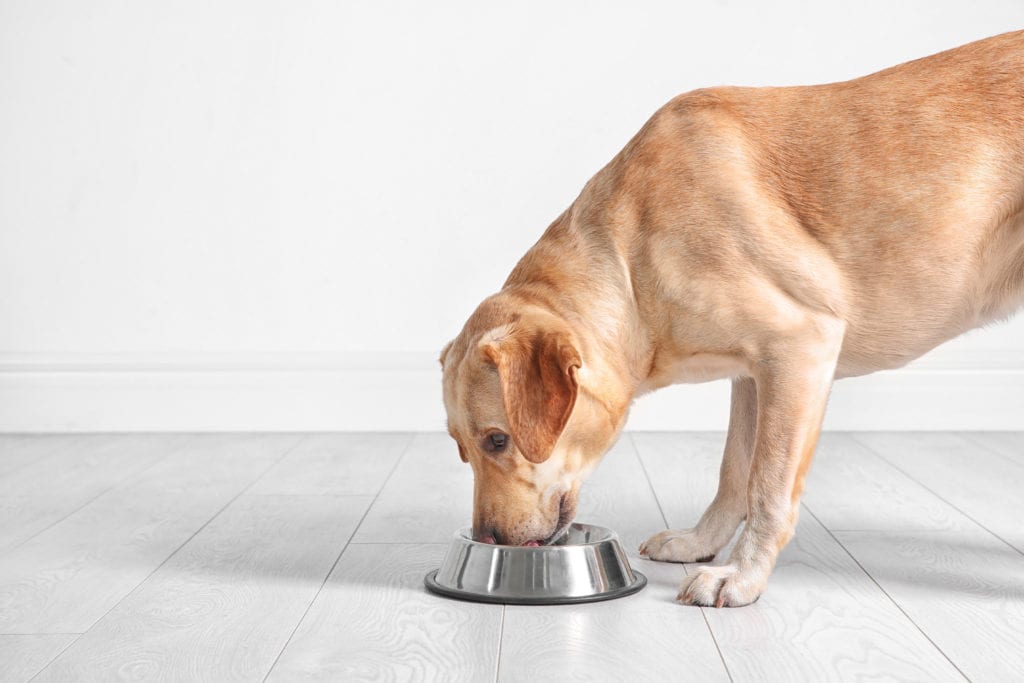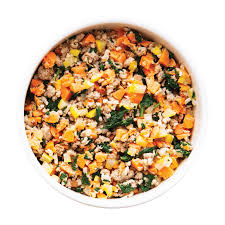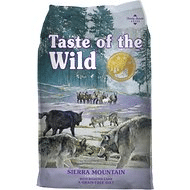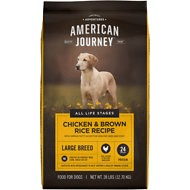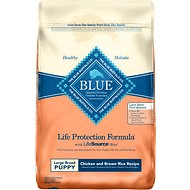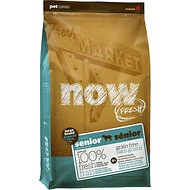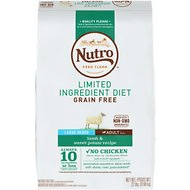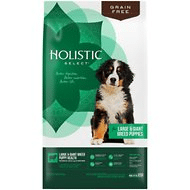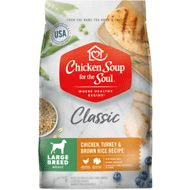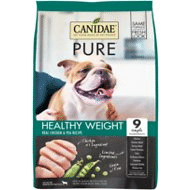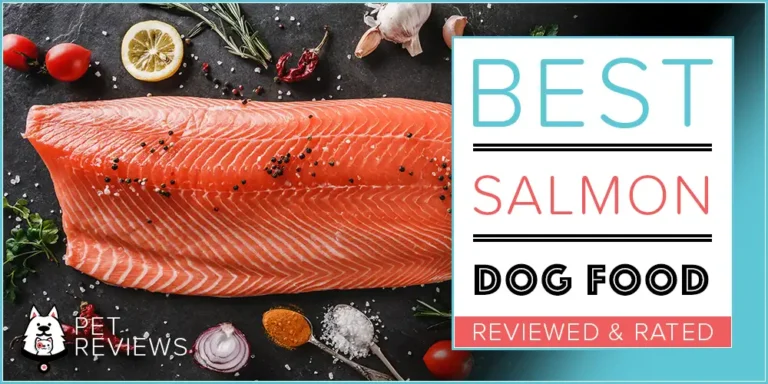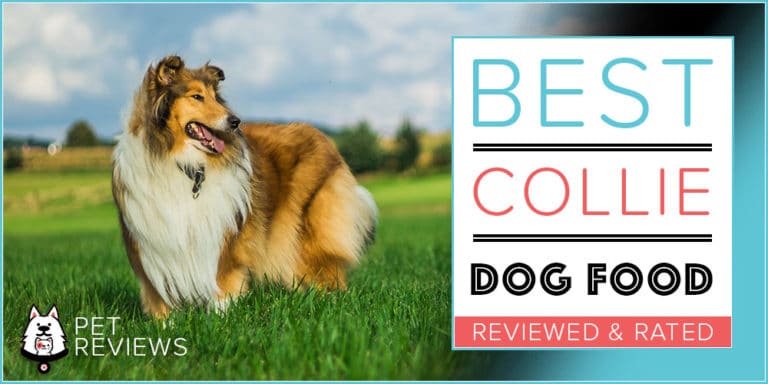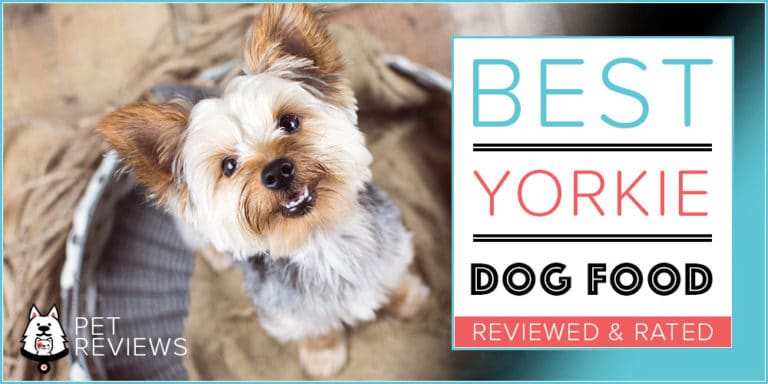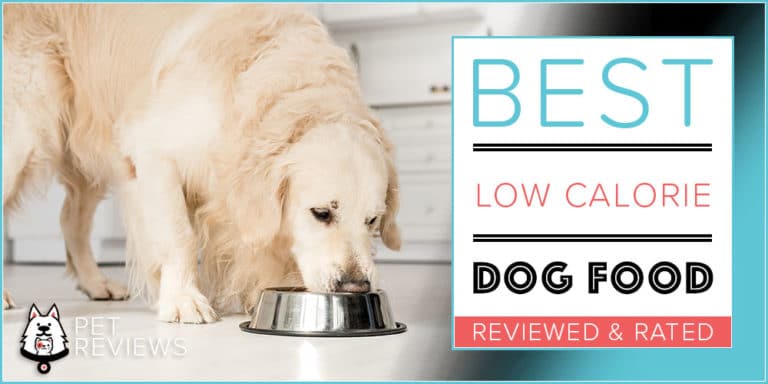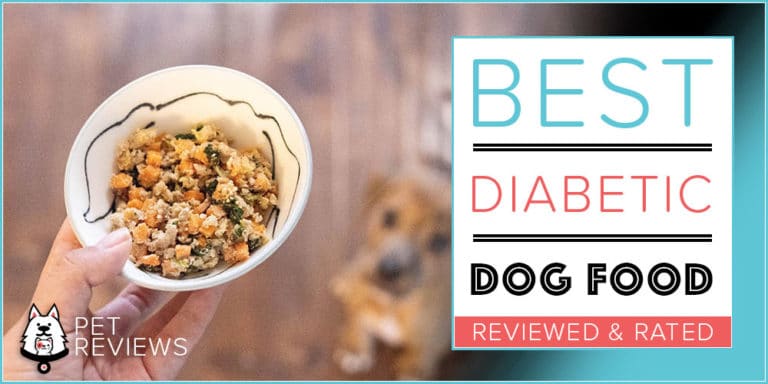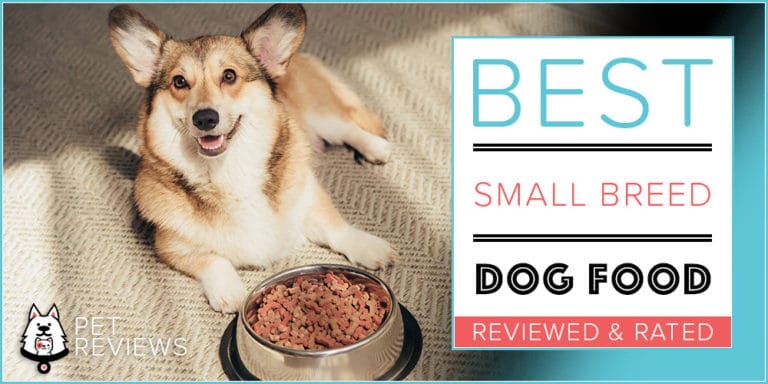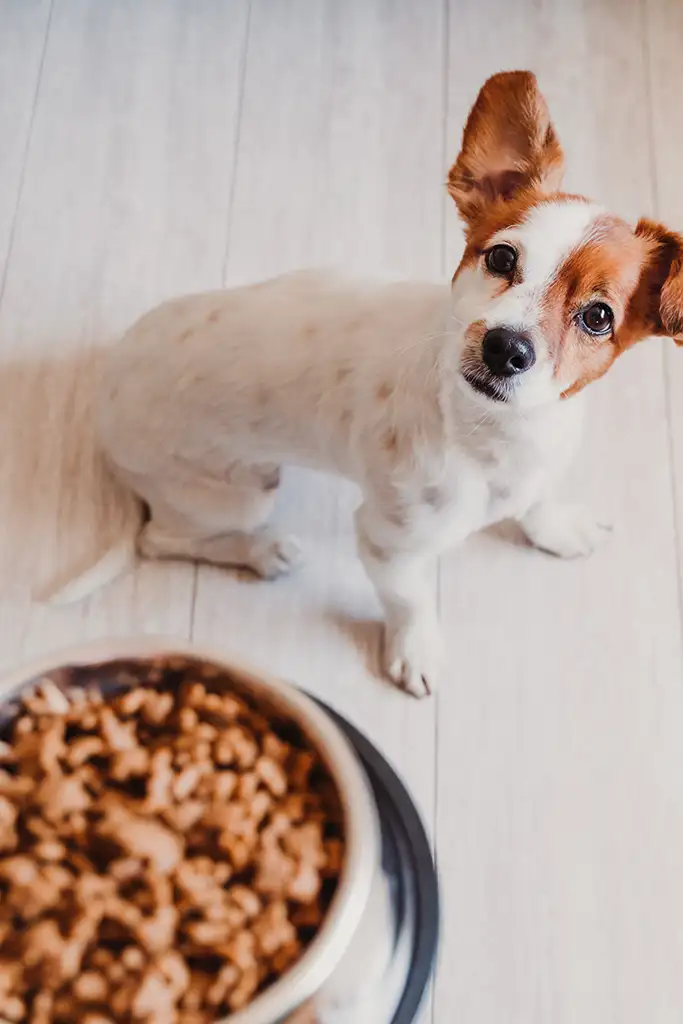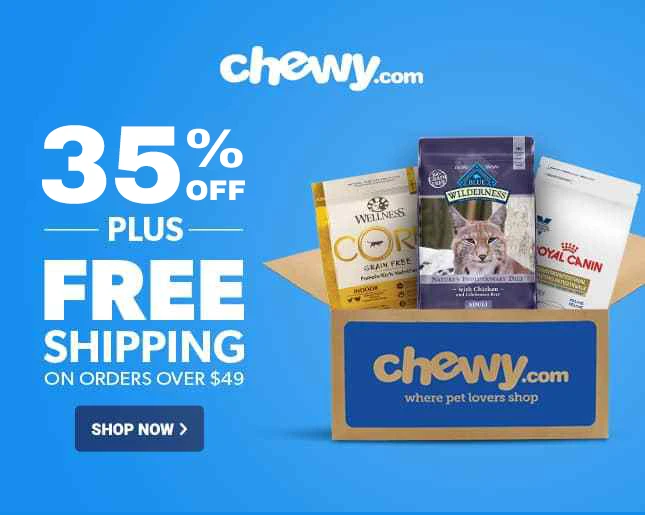10 Best (Healthiest) Dog Foods for Labradors in 2024
Quick Guide
- What Is The Best Dog Food For Labradors?
- What Do You Need to Know About Labradors?
- Do They Have Any Special Dietary Needs?
- What to Look for in a Good Labrador Dog Food
- The 10 Best Labrador Dog Foods
- Overall Best Labrador Dog Food: NomNomNow Fresh Food Delivery
- Most Popular Labrador Dog Food: Taste of the Wild Sierra Mountain Grain-Free Dry Food
- Most Affordable Labrador Dog Food: American Journey Large Breed Chicken & Brown Rice Protein First Dry Food
- Best Food for Labrador Puppies: Blue Buffalo Life Protection Formula Large Breed Puppy Chicken & Brown Rice Recipe Dry Food
- Best Labrador Dog Food for Seniors: Now Fresh Grain-Free Large Breed Senior Weight Management Recipe Dry Food
- Best Food for Labradors with Sensitive Stomachs: Nutro Limited Ingredient Diet Grain-Free Adult Large Breed Lamb & Sweet Potato Recipe
- 4 More Top-Rated Labrador Dog Foods
- Frequently Asked Questions
The Labrador is a large-breed dog that weighs 50 to 80 pounds at maturity, and they have very high needs for exercise. These dogs are smart and trainable if you can control their energy, and they love spending time with family. If you want what’s best for your Labrador, you’ll feed him a healthy and high-quality diet that accounts for his unique nutritional needs.
In this article, we’ll take a closer look at the Labrador breed and explore some of its nutritional needs. We’ll also provide some tips for choosing the best food for Labradors and give you our top 10 picks.
What Is The Best Dog Food For Labradors?
- NomNomNow Fresh Food Delivery
- Taste of the Wild Sierra Mountain Grain-Free Dry Food
- American Journey Large Breed Chicken & Brown Rice Protein First Dry Food
- Blue Buffalo Life Protection Formula Large Breed Puppy Chicken & Brown Rice Recipe Dry Food
- Now Fresh Grain-Free Large Breed Senior Weight Management Recipe Dry Food
- Nutro Limited Ingredient Diet Grain-Free Adult Large Breed Lamb & Sweet Potato Recipe
What Do You Need to Know About Labradors?
As a large-breed dog, Labrador Retrievers may not reach their full size until they are more than a year old. These dogs can grow up to 80 pounds, so it may take 18 to 24 months for a puppy to fully mature. Even when your Lab is fully grown, however, he may still retain some of his puppylike tendencies. These dogs can be a bit much to handle if you’re not used to energetic dogs, but they are always good-natured, friendly, and people-oriented.
The Labrador’s friendly personality is one of the main reasons the breed has been ranked the most popular purebred dog for 10 years running. These dogs are very family-friendly because they love children, and they are always up for a game. They get along very well with other dogs and are typically very cat-friendly as well, particularly when raised with a cat. Early socialization and training is always recommended, but aggression and dominance are typically not a problem for this breed.
Labrador Retrievers are the perfect fit for an active family because they are always on the move. These dogs are intelligent and respond well to training, but they can get distracted sometimes. They do well in dog sports like agility but can also be trained as guide dogs, search and rescue dogs, and service dogs. The thing to remember with this breed is that daily exercise is a must – a short, leisurely walk will not be enough to meet this breed’s needs. Having a second dog to play with is a great idea, and it will be even better if your Lab has a fenced yard in which to play.
Do They Have Any Special Dietary Needs?
All dogs have the same basic nutritional needs because they all belong to the same species. This being said, large dogs like the Labrador Retriever have slightly different requirements. As was mentioned earlier, these dogs may not reach their full size until they are 18 to 24 months of age. You don’t need to feed your Lab puppy food for that long, but you should keep track of his growth. Large breeds have a high risk for musculoskeletal issues in adulthood and excess growth in the puppy stage increases that risk – you need to control your Lab’s growth when he is young to minimize his risk.
Protein is the most important nutrient for any dog but particularly for large breeds. As a puppy, your Lab needs a minimum of 22% protein in his diet to support muscle growth and development. As an adult, he needs at least 18% to maintain lean mass, though more protein is always a good thing. Fat provides a concentrated source of calories for your dog, but this nutrient should be controlled in the diet for large breeds because it is so calorie-dense – too much fat could equal too many calories. A high-protein diet with low-to-moderate fat and calorie content is best for large breeds like your Labrador.
In addition to taking your Lab’s size into account when choosing the best dog food, you should also consider his risk for certain health problems. One thing to be aware of that may have dietary consequences is the risk for allergies. Labs can develop skin allergies as well as allergies to certain food ingredients. Feeding your dog a limited ingredient diet made with a single source of high-quality animal protein is a good option, or you can try an elimination diet to identify the specific food allergen.
Here are some of the other health problems to which the breed is prone:
- Hip dysplasia
- Elbow dysplasia
- Progressive retinal atrophy
- Cataracts
- Osteochondrosis
- Epilepsy
You also need to be wary of bloat, a life-threatening condition also known as gastric dilation volvulus. This happens when the dog’s stomach fills with air and twists, cutting off blood flow. It can happen when your dog eats too much, eats too fast, or swallows too much air while eating. Avoid feeding your lab right before or after strenuous exercise, and consider using a slow-feed bowl to keep him from eating his meals too quickly.
What to Look for in a Good Labrador Dog Food
As a dog owner, it is your responsibility to make sure that your Labrador gets the nutrients he needs. Dogs are not obligate carnivores like cats, but the majority of their diet should come from animal sources to ensure maximum bioavailability. Choose a diet made with wholesome, natural ingredients that meets your dog’s specific requirements or preferences.
Here are some things to look for in a good Labrador dog food:
- High-quality animal protein. All dogs require a protein-rich diet, but a breed like Labradors who are at-risk for obesity should focus on lean proteins. Higher protein content will help your dog maintain lean muscle mass as well.
- Low-to-moderate fat content. Fat provides a concentrated source of calories for dogs as well as essential fatty acids. Your dog needs fats for healthy skin and coat as well as brain development, but keep the content controlled to avoid going overboard on calories.
- Highly digestible ingredients. Digestibility is essential, and the most digestible ingredients are ones that are natural, whole-food ingredients. This particularly applies to carbohydrates, so look for whole grains (if your dog can tolerate them) as well as fruits and vegetables.
- Joint-supporting nutrients. Calcium and phosphorus are essential for bone health, while glucosamine and chondroitin support joint health. Choose a large-breed dog food that is already formulated for your Labrador’s needs, knowing that a little extra glucosamine never hurts.
- Complete and nutritionally balanced. Any dog food that carries an AAFCO statement of nutritional adequacy is nutritionally complete, but that doesn’t guarantee the quality of ingredients. Most dog foods use vitamin and mineral supplements, but look for fresh fruits and veggies to provide natural sources for key nutrients with chelated minerals for optimal nutrient absorption.
Now that you know more about your Labrador’s nutritional needs, you’re ready to start shopping for the best food for Labrador Retrievers. Keep reading to see our top 10 picks.
The 10 Best Labrador Dog Foods
| Our 2024 Picks: Best Labrador Dog Foods | |||
NomNomNow Fresh Food Delivery
|
CHECK PRICE | ||
Taste of the Wild Sierra Mountain Grain-Free Dry Food
|
CHECK PRICE | ||
American Journey Large Breed Chicken & Brown Rice Protein First Dry Food
|
CHECK PRICE | ||
Blue Buffalo Life Protection Formula Large Breed Puppy Chicken & Brown Rice Recipe Dry Food
|
CHECK PRICE | ||
Now Fresh Grain-Free Large Breed Senior Weight Management Recipe Dry Food
|
CHECK PRICE | ||
Nutro Limited Ingredient Diet Grain-Free Adult Large Breed Lamb & Sweet Potato Recipe
|
CHECK PRICE | ||
The best dog food for Labrador Retrievers will be a large-breed dog food made with plenty of lean animal protein and low-to-moderate fat content. It should be highly digestible and nutritionally balanced with fresh fruits and vegetables for nutritional support. If your dog has food allergies or a sensitive stomach, you may want to consider a limited ingredient diet.
Here’s our top pick for the best Labrador dog food:
Overall Best Labrador Dog Food: NomNomNow Fresh Food Delivery
When it comes to high-quality nutrition for dogs, experts agree that fresh is best. Fresh pet food isn’t cooked at the high temperatures typical kibble is exposed to and it is often made in smaller batches. Both of these things combined lead to higher nutritional quality which is a benefit for your dog. NomNomNow is one of the top fresh pet food delivery services and offers several recipes for your Labrador Retriever. They do not offer size-specific recipes, but they do take your dog’s information and send you perfectly portioned packages of fresh food according to your dog’s calorie needs. Choose from several different protein options with fresh fruits and vegetables, some recipes being grain-free and others grain-inclusive. You can rest easy knowing that fresh, high-quality dog food will be delivered right to your door on a monthly basis – all you have to do is sign up. If your Labrador has allergies or food sensitivities, just talk to a representative and they’ll be happy to work with you.
Pros: Fresh food delivered to your door, perfectly portioned for your dog’s calorie needs, choose from several protein options, grain-free and grain-inclusive available, complete and balanced
Cons: Not size-specific, more expensive than traditional kibble
Most Popular Labrador Dog Food: Taste of the Wild Sierra Mountain Grain-Free Dry Food
When you can’t decide what to feed your Labrador Retriever, you can always go with a popular brand like Taste of the Wild. This brand offers a variety of high-quality dry foods featuring premium roasted meats and fresh fruits and vegetables. This Taste of the Wild Sierra Mountain Grain-Free Dry Food is a protein-rich formula featuring fresh lamb and lamb meal as the top two ingredients, providing an overall 25% crude protein content. It contains a blend of canola oil and salmon oil to provide the ideal combination of omega-3 and omega-6 fatty acids for healthy skin and coat with probiotic supplements for healthy digestion. This recipe contains fresh fruits and vegetables like blueberries, tomatoes, and raspberries to act as natural sources for key nutrients, though there are also vitamin supplements and chelated minerals to ensure complete and balanced nutrition. This formula is rich in fiber and natural enzymes for digestive support and, overall, contains 15% fat and 5% fiber at 338 calories per cup.
Pros: Single-source of animal protein, highly digestible, fresh fruits and vegetables, blend of omega fatty acids, chelated minerals, probiotics for healthy digestion, complete and balanced
Cons: Could be higher in protein, some dogs don’t require a grain-free diet
Most Affordable Labrador Dog Food: American Journey Large Breed Chicken & Brown Rice Protein First Dry Food
You don’t necessarily need to empty your wallet to feed your dog well. There are plenty of affordable options in dog food that still offer high quality. Our top pick for the best affordable dog food for labs is American Journey Large Breed Chicken & Brown Rice Protein First. This recipe is formulated for large breeds like your Lab and features a premium source of lean animal protein as the first ingredient. It contains highly digestible brown rice and barley as whole-grain carbohydrates with fresh fruits and vegetables as sources of supplemental fiber. These ingredients also provide natural sources for key nutrients to balance out the vitamin and chelated mineral supplements. This recipe provides 24% protein with just 13% fat at 335 calories per cup, making it a protein-rich but moderate-fat and -calorie recipe perfect for your Labrador.
Pros: Formulated for large breeds, rich in lean animal protein, highly digestible carbohydrates, fresh fruits and vegetables, rich in fiber for healthy digestion, chelated minerals, moderate fat/calories
Cons: Contains some plant protein (pea protein)
Best Food for Labrador Puppies: Blue Buffalo Life Protection Formula Large Breed Puppy Chicken & Brown Rice Recipe Dry Food
Your Labrador puppy needs a high-quality puppy food formulated for large breeds. The best puppy food in this category that we’ve found is Blue Buffalo Life Protection Formula Large Breed Puppy Chicken & Brown Rice Recipe Dry Food. Because it comes from Blue Buffalo, it contains LifeSource Bits which contain a proprietary blend of vitamins, minerals, and antioxidants for complete and balanced nutrition. It is also made with plenty of lean animal protein from fresh chicken and supplemental protein from menhaden fish meal. This recipe is highly digestible, featuring whole grains like brown rice and oatmeal. It also contains fresh fruits and vegetables to provide supplemental fiber and essential nutrients. Overall, it provides 26% protein and 15% fat with 386 calories per cup. It is uniquely formulated to support healthy development in large-breed puppies while controlling growth.
Pros: Formulated for large breeds, fresh chicken first ingredient, digestible whole-grain carbohydrates, fresh fruits and vegetables, blend of omega fatty acids, LifeSource Bits, highly digestible
Cons: Contains some plant protein (pea protein)
Best Labrador Dog Food for Seniors: Now Fresh Grain-Free Large Breed Senior Weight Management Recipe Dry Food
As your Labrador Retriever gets older, his metabolism will slow down and his risk for obesity increases even more. The key to keeping your Lab healthy in his old age is to provide him with a healthy and balanced diet made with plenty of lean protein but limited in fat and calories. The best option is Now Fresh Grain-Free Large Breed Senior Weight Management Recipe Dry Food. Not only is this recipe formulated for large-breed senior dogs, but it is also designed for weight management. This recipe features fresh turkey as a lean source of animal protein with digestible grain-free carbohydrates like potatoes and tapioca. This recipe contains plenty of fresh fruits and vegetables to provide natural sources for key nutrients with green-lipped mussels included as a natural source of joint-supporting glucosamine and chondroitin. This formula provides a full 25% protein with just 11% fat and 328 calories per cup, making it a nutritious diet for large-breed senior dogs like your Lab.
Pros: Formulated for large-breed seniors and weight management, lean turkey main ingredient, digestible grain-free carbohydrates, fresh fruits and vegetables, green-lipped mussels
Cons: Fairly expensive compared to other options
Best Food for Labradors with Sensitive Stomachs: Nutro Limited Ingredient Diet Grain-Free Adult Large Breed Lamb & Sweet Potato Recipe
Any dog has the potential to develop food allergies, though they usually don’t present until the second year of life. In addition to food allergies, Labs are also at risk for skin allergies. Fortunately, the best dog food for labs with skin allergies will also be good for food allergies, in most cases. The key is to choose a recipe that is highly digestible and made with a limited number of ingredients like this Nutro Limited Ingredient Diet Grain-Free Adult Large Breed Lamb & Sweet Potato Recipe. This formula features fresh deboned lamb as the main ingredient, which is a rich source of complete protein – it is supplemented by lamb meal as a concentrated source of protein. This recipe contains grain-free carbohydrates like chickpeas and dried potatoes with plenty of fiber for healthy digestion. It contains a rich blend of omega-3 and omega-6 fatty acids as well for skin and coat support. Overall, this recipe provides 20% protein with 13% fat at 475 calories per cup.
Pros: Made with 10 main ingredients, fresh lamb main ingredient, digestible carbohydrates, rich in fiber for digestion, contains 20% protein, blend of omega fatty acids for skin and coat support
Cons: High in calories compared to other options, some dogs may not need grain-free
4 More Top-Rated Labrador Dog Foods
If the dog foods reviewed above don’t seem like the perfect fit for your Labrador Retriever, don’t worry – there are plenty of other options! Here are four more top-rated Labrador dog foods we recommend:
Holistic Select Large Breed Grain-Free Dry Food
If your Labrador has food allergies or a sensitive stomach, you might consider a grain-free recipe like this Holistic Select Large Breed Grain-Free Dry Food. This recipe is uniquely formulated for large-breed dogs and it is a holistic recipe made with all-natural ingredients. It contains chicken meal as the first ingredient and a concentrated source of lean protein. You’ll also find whitefish meal and eggs as supplementary sources of protein with nutritious chicken fat for energy and coat support. This recipe contains 26% protein and 13% fat, which is an ideal ratio for large breeds and has a moderate calorie content, which is important for breeds like the Lab that are prone to obesity. Overall, this recipe is complete and nutritionally balanced without any artificial additives or fillers, and it contains essential vitamins and chelated minerals for nutritional balance.
Pros: Formulated for large breeds, protein-rich with moderate calories, fresh fruits and vegetables, digestible grain-free carbohydrates, fiber and probiotics, chelated minerals
Cons: Not all dogs require grain-free diets
Chicken Soup for the Soul Large Breed Chicken, Turkey & Brown Rice Recipe
If you’re looking for another affordable option in dog food for your Labrador, consider this Chicken Soup for the Soul Large Breed Chicken, Turkey & Brown Rice Recipe. Recently reformulated, this recipe features fresh chicken as the main ingredient with turkey, chicken meal, and turkey meal as lean sources of supplemental protein. This formula also contains digestible whole-grain carbohydrates like cracked pearled barley and whole-grain brown rice as nutritious sources of fiber and essential nutrients. It also contains fresh fruits and vegetables to provide natural sources for key nutrients, supplemented by vitamins and chelated minerals. This recipe provides a rich blend of omega-3 and omega-6 fatty acids for healthy skin and coat and it is completely free from corn, wheat, and soy as well as fillers, by-products and artificial additives. Overall, it provides 24% protein and 13% fat at 374 calories per cup.
Pros: Formulated for large breeds, real chicken first ingredient, digestible whole-grain carbohydrates, fresh fruits and vegetables, fiber and probiotics, rich blend of omega fatty acids
Cons: Not a grain-free recipe (some dogs may be sensitive)
Wellness Complete Health Large Breed Adult Deboned Chicken & Brown Rice Recipe
If you’re looking for a healthy, balanced diet for your large-breed dog, this Wellness Complete Health Large Breed Adult Deboned Chicken & Brown Rice Recipe is a great option. It features fresh chicken as a lean source of protein with digestible whole-grain carbohydrates like brown rice, barley, and oats. It offers moderate fat content with optimal protein to help your dog maintain a healthy body weight as well as lean muscle mass. This recipe promotes joint health in dogs thanks to glucosamine and chondroitin supplements, not to mention chicken meal which is a natural source of joint-supporting nutrients. This formula also contains a variety of fresh fruits and vegetables to provide natural sources for key nutrients with vitamins and chelated minerals to ensure nutritional balance. Overall, it provides 26% protein and 12% fat at 340 calories per cup.
Pros: Formulated for large breeds, optimal protein and fat for healthy body weight, joint-supporting nutrients, fresh fruits and vegetables, probiotics, chelated minerals, nutritionally balanced
Cons: Not a grain-free recipe (some dogs may be sensitive or allergic)
Canidae PURE Grain-Free Healthy Weight Real Chicken & Pea Recipe Dry Food
The Labrador Retriever is an active breed but also highly prone to obesity. If your Lab doesn’t get the exercise he needs, he may put on weight and that puts him at risk for wide variety of health problems. If your Lab is prone to weight gain, you might consider a healthy-weight recipe like this Canidae PURE Grain-Free Healthy Weight Real Chicken & Pea Recipe Dry Food. This formula features just 9 main ingredients which makes it highly digestible and it has a low risk of triggering food allergies or sensitivities. It features real chicken as the main ingredient with chicken meal and turkey meal as supplemental sources of protein. This formula contains sweet potatoes as the main carbohydrate with other grain-free options like peas and garbanzo beans. It is supplemented with plenty of fiber and probiotics for healthy digestion and is complete and nutritionally balanced as well. Overall, it provides 28% protein and 9% fat at 409 calories per cup.
Pros: Just 9 main ingredients, real chicken first ingredient, digestible grain-free carbohydrates, plenty of fiber and probiotics for digestion, complete and balanced, rich in protein, low in fat
Cons: May be higher in calories than some dog owners expect (pay attention to feeding recommendations)
Frequently Asked Questions
How much should I feed my Labrador?
If you’re wondering how much to feed a Labrador, know that the answer will change over the course of your dog’s life. As a puppy, Labrador Retrievers grow very quickly and they need a steady influx of protein and healthy fats to support their growth and development. You need to be careful, however, because growing too fast could put your dog at risk for bone and joint problems later in life. This is why you need to find the best large breed puppy food because it will meet your Lab puppy’s needs while controlling his growth as needed. As a puppy and an adult, refer to the feeding instructions on the food package to see how much to feed.
How often should I feed my Labrador?
Most dogs do well with two meals a day, though your Labrador puppy may need three small meals to sustain his growth during the first 6 months or so of his life. As long as you choose the best large breed puppy food you can afford, you can follow the feeding recommendations on the package and divide the daily amount into three small meals. As an adult (over 12 months), feed your Lab two meals a day. How much to feed a Labrador depends on his calorie needs.
Do Labradors have food allergies?
All dogs have the potential to develop food allergies, though they are not as common as the pet food industry would have you believe. Most dogs don’t develop food allergies until they are 1 or 2 years old, so you may not need to spend a fortune on hypoallergenic puppy food. You should know, however, that Labs are prone to skin allergies which can be exacerbated by certain food ingredients. Pay attention to your dog’s digestive health and skin health, consulting your veterinarian if signs of allergies develop.
When should I switch my Labrador puppy to adult food?
Most veterinarians recommend sticking to puppy food for the first 12 months. In a large breed like the Labrador, however, your dog may not be fully grown at 12 months. You should plan to fed him a large breed puppy food for 12 months to control his growth and switch to a large breed adult food when his growth starts to slow down. Keep an eye on your dog’s body weight and condition as well to make sure he isn’t growing too quickly or gaining too much weight.
Is a grain-free diet good for Labradors?
There is a lot of controversy surrounding grain-free diets for dogs, particularly for large breeds. Large-breed dogs have a higher risk for dilated cardiomyopathy (DCM), and there are some reports linking grain-free diets to an increased risk of DCM. The thing to remember is that grain-free diets are not inherently healthier for your dog – the only reason to use one is if your dog is allergic or sensitive to grains. Otherwise, a diet, including whole grains is perfectly healthy and highly digestible.
The Labrador Retriever is a popular breed, and for good reason. These dogs are big and lovable, full of energy and excitement. They love to spend time with people, and they are always up for a game, making them the perfect family pet (if you can keep up with them). Like any dog, however, they require a balanced diet to keep them healthy and active.
Now that you understand your Lab’s nutritional needs, you are ready to start shopping! Remember to choose a dog food formulated for large breeds and make sure it features wholesome, natural ingredients from high-quality animal sources as much as possible. If you’re still not sure where to start, try one of our top 10 picks for the best Labrador food reviewed above.

